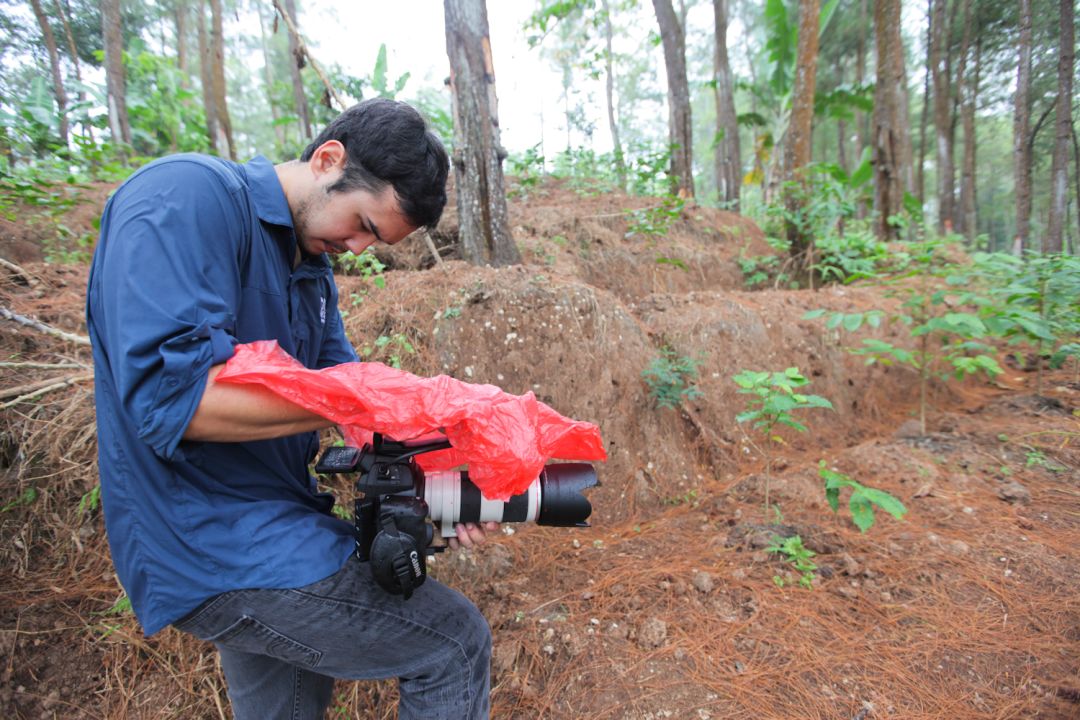Turmeric
Tripper
Imagine a place as far from the modern industrial ideal of monoculture as you could find, a place where fields are alive with incredible varieties of colorfully exotic plants.
Imagine farmers who never gave a thought to buying patented biotech seeds, or the chemicals they require, and who labor daily on mountain slopes, in forests and in the rich lowlands for the good of their families and communities.
Now set your watch back, as you arrive in Kediri, East Java.
In the villages surrounding this ancient capital city, farmers cultivate an abundant diversity of crops that mirrors the people, cultures and geography of Indonesia itself. Here, communities are just as interdependent as the plants, growing organically, and together reaching ever higher.
Farmer Achmad Adib is an inspiring example of the ambitions and aspirations of the people. He once studied law, but returned to his village of Banyakan to lift his community with a dream of making the region famous for production of ginger and turmeric. Helping him realize this goal is a close-knit group of nearly two dozen local farmers who work as subcontractors, growing their crops according to the strict organic standards outlined by Achmad and the company that first discovered him, Tripper Inc.
An exporter of many pure Indonesian spices, Tripper relies on the strong personal relationships Achmad has cultivated over the years with other farmers in the region. More than three decades ago, he and some of these farmers planted ginger in the nearby pine forest. The forest itself is an ecosystem of interdependence. Ginger is planted among pines and coffee trees that provide the perfect amount of shade for this sensitive plant.
The regional government is part of the dynamic of interdependence. Although the land is owned by the forestry department, the government invited Achmad and his group to cultivate ginger in the forest for a very practical reason: When the price of pine latex falls, the local farmers are not excited about venturing into the forest to collect latex from the trees. But the farmers make the trip to tend their ginger plants, and will watch over the pine trees while they’re there.
“The forestry department has a liaison program with local farmers, and they selected us to grow ginger on this land, responsibly,” Achmad explains. “The condition for farmers to use this acreage is that no pesticides or fertilizer are allowed.
“My dream is to make this area famous for ginger production. Because the forestry department has entrusted me with this land, I feel a duty to make the ginger grown here vibrant, full and healthy. I work hard every day to make this dream come true.”
Achmad’s other major crop also thrives amid ecological diversity: Turmeric, a spice and coloring agent that is part of the ginger family, grows on mango plantations in the lands surrounding the village. The trees provide an ideal canopy for the plants, as well as a vivid panorama of tropical colors when the turmeric blossoms.
“I realized ginger and turmeric would be a way to improve the lives of people in our community,” he says. “And so I began working with local farmers to help them grow these crops, providing seed and helping them find markets.”
In demand throughout Asia and beyond, ginger is the ideal crop for bringing prosperity to the region. Achmad’s ginger is especially prized, as his own unique invention, a grater used during slicing, ensures a higher oil content than many competing varieties. His invention is also much safer for workers to use during processing.
Ginger is a key ingredient in a drink beloved by many Indonesians, a mix of milk, honey, ginger and egg. Ginger’s less well-known cousin turmeric can’t boast a special drink, but its potential for preventing chronic disease has begun to fascinate modern researchers who are actively studying its anti-inflammatory, anti-bacterial and anti-viral properties. Many locals will tell you, though, that they completed their own research on turmeric’s benefits long ago, and now use it as a remedy for a range of ailments and discomforts.
This daily familiarity with the crops they grow, and the many gifts nature has buried inside each plant, is another aspect of the harmony the people enjoy with the natural world around them. In a place far from North American monoculture, far from the ideologies of conventional farming, they sustain a tradition of stewardship, respecting a land that brings them flavors, friends, rich lives and, very soon, a prosperous future.
— Charlie Dodge





